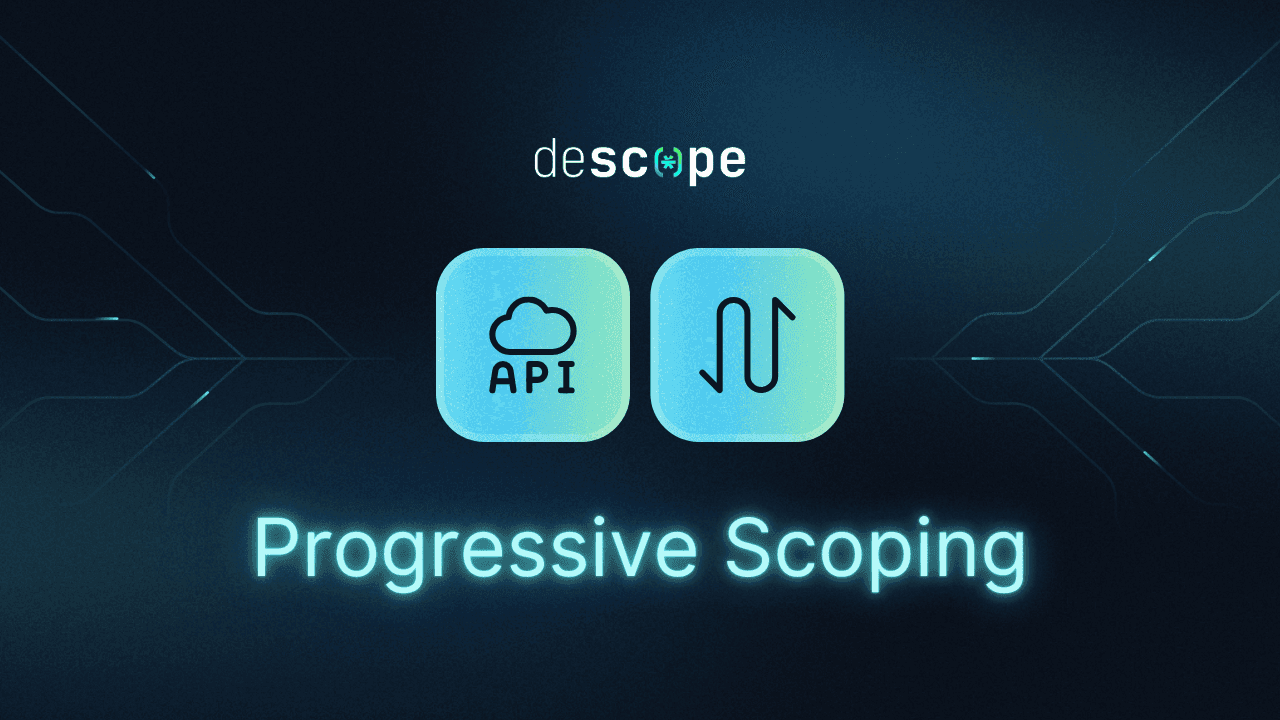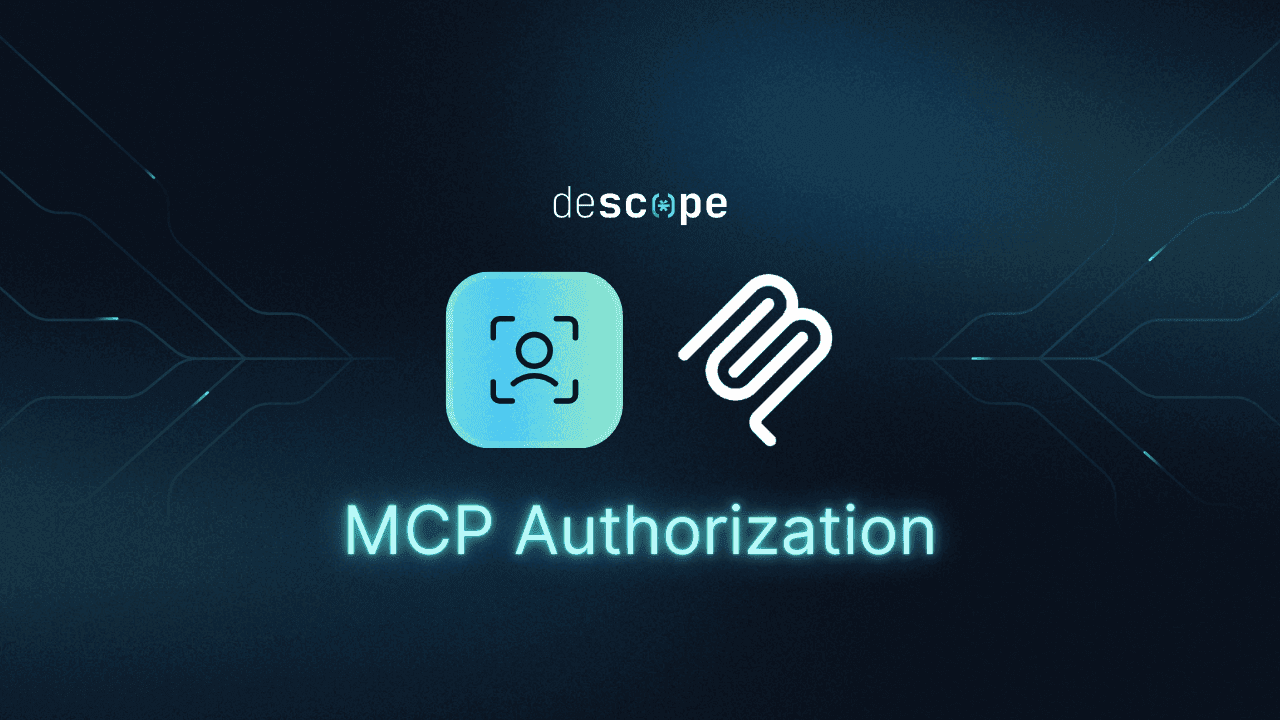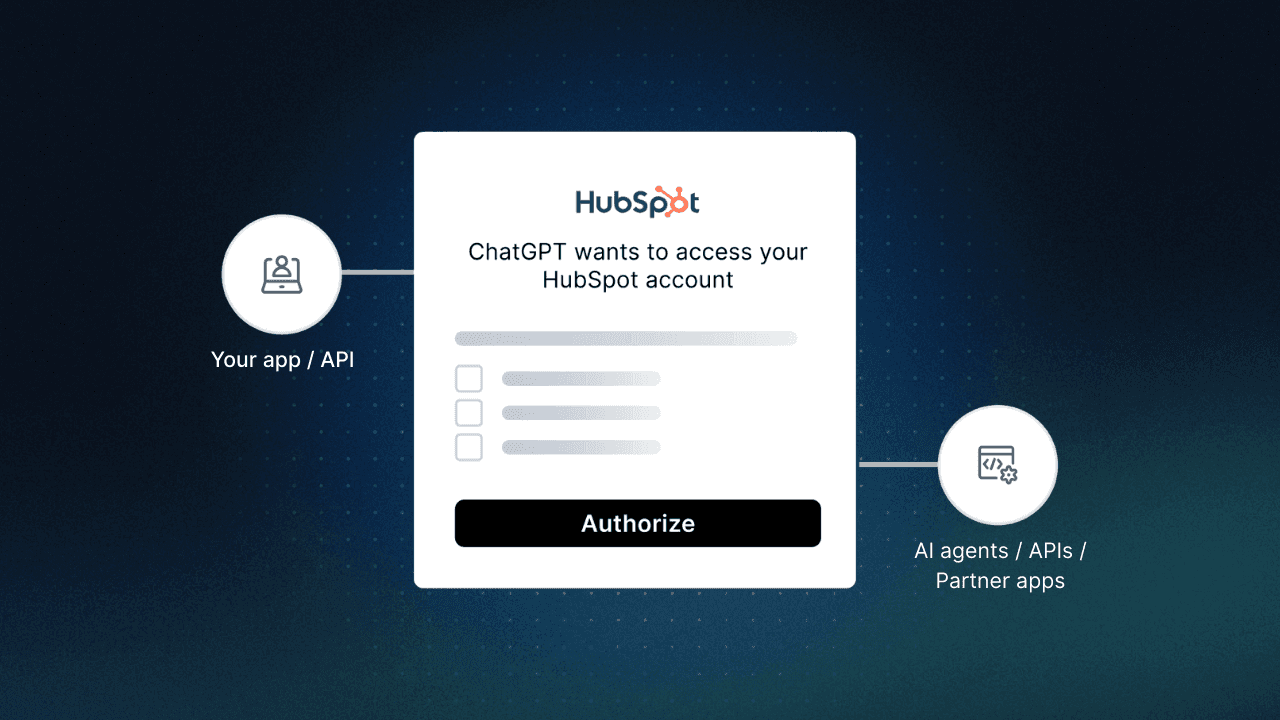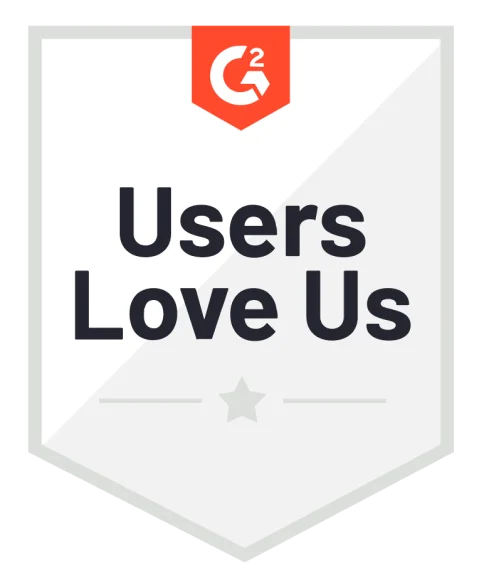Table of Contents
Vague scope requirements and Agent Experience (AX)
As organizations increasingly integrate AI agents, tools, and autonomous workflows into their operations and products, you need to secure your APIs for the users of tomorrow—both human and machine. That means minimizing the scope of access for every action taken.
Giving a user more API permissions than needed is like handing someone a chainsaw when a pocket knife will do. Sure, it gets the job done—messily and dangerously. Whether triggered by a human user or an AI agent acting on their behalf, each API request should carry only the permissions needed for the task at hand.
This principle, known as progressive scoping, focuses on intent—what the tool is trying to do—and whether it has permission to do so.
This guide walks through three critical aspects of progressive scoping:
How ambiguous scope requirements create security vulnerabilities when tokens are compromised
Why defining scopes in a machine-readable format creates a more secure, frictionless flow
How token management systems can cache and serve the right permissions at the right time
Vague scope requirements and Agent Experience (AX)
Most APIs today define their required scopes in ways that frustrate humans and confuse machines—especially AI agents handling tasks on behalf of users. When an agent hits a scoping obstacle, it negatively impacts Agent Experience, or AX. Optimizing for AX is crucial because it creates a shorter path from user prompt to task completion.
If an API’s scopes are even defined in human-readable documentation (they often aren’t), we’re still faced with several challenges:
Developers and tools can’t programmatically discover which scopes they need for a specific endpoint.
Access errors are ambiguous; a 403 Forbidden response doesn’t always include missing scope details.
Developers over-scope by default, requesting every permission to avoid errors—which is a security risk if tokens are compromised.
OAuth 2.0 does include optional guidance on how to respond to missing scopes, but implementations vary, and AX-friendly scope definitions are still rare.
How OAuth flow failures impact AX
Imagine a user tasks their agent with a workflow that invokes your API. The agent requests a token with default scopes, makes an API call, and gets a 403 response because it lacks access to the /contacts/export endpoint.
The agent must:
Struggle to interpret a vague error message
Prompt the user to reconnect with broader permissions
Finally, the agent must retry the request after adding friction and delay
This reactive pattern is inefficient and creates a poor agent and user experience—not a reputation you want your API to earn in an increasingly AX-friendly marketplace.
The progressive scoping advantage
When scope requirements are discoverable up front based on intent, agents request only the necessary permissions per tool or feature.
User experience improves because people aren’t bombarded with consent prompts for irrelevant scopes, and security tightens because agents aren’t given excessive permissions (making their tokens more vulnerable if stolen). Meanwhile, AX improves because the agent is able to carry out their workflow without having to notify the user about unclear scoping issues.
Minimized permission grants: Only strictly necessary access is requested (or granted)
Fewer consent prompts: AI agents don’t ask users to approve over-scoping
Improved agent compatibility: AI tools and orchestrators can understand and request access intelligently
Clear error recovery: If access fails, the missing scopes are explicit
Solution 1: Improving OAuth error handling
The OAuth 2.1 specification states that when a token lacks the necessary scopes, the resource server (i.e., your API) must return a 403 Forbidden status. However, including information about which scopes were missing is optional.
Specifically, the spec allows—but does not require—servers to return a WWW-Authenticate header describing the missing scopes. In theory, this enables a dynamic “try → fail → reconnect” flow where an agent or tool can react to insufficient permissions and prompt the user to authorize additional access.
OAuth-based error handling flow:
[Agent / Tool] → Request token → [Token Manager, e.g. Descope]
[Token Manager] → Return token → [Agent]
[Agent] → API call → [API Server]
[API Server] → 403 Forbidden + (Optional) WWW-Authenticate header with required scopes
[Agent] → Prompt user to reconnect with new scopes
[Token Manager] → Issue new token → [Agent]
[Agent] → Retry call → [API Server]However, in practice, this pattern often fails because:
Most APIs and OAuth providers do not return the missing scopes in a structured or consistent way
There is no standard format for how to express or parse this information in error responses
Agent/tool developers are forced to guess, hardcode scopes, or request overly broad permissions
If you are building your own APIs protected with OAuth, we strongly recommend including the required scopes in the error response—ideally in a consistent, machine-readable format. This small addition makes it significantly easier for tools and token managers to support dynamic scope recovery.
Ultimately, while OAuth allows this behavior, the lack of enforcement or standardization severely limits its utility in automated tooling and agent-based ecosystems. This is one of the key reasons progressive scoping, defined in OpenAPI specs or tool metadata, is a more scalable and reliable solution.
Solution 2 (preferred): Define scopes in OpenAPI specs
A far more reliable and scalable solution is to embed required scopes directly in your OpenAPI specification. Here’s how:
paths:
/users:
get:
summary: Get all users
security:
- OAuth2:
- read:users
/users/{userId}:
get:
summary: Get a specific user
security:
- OAuth2:
- read:users
- read:user:{userId}
parameters:
- name: userId
in: path
required: true
schema:
type: stringNow agents, SDKs, and token managers can programmatically inspect your OpenAPI spec, extract required scopes per endpoint, and request only what’s needed.
Tool-based architectures (e.g. MCP)
For applications using Model Context Protocol (MCP) or similar agent-to-tool orchestration models, this concept extends even further.
Each tool should define its own set of scopes—just like each endpoint.
For example:
A CRM sync tool might need:
contacts.read, pipeline.writeA document summarizer might need:
docs.read, docs.writeA calendar manager might need:
calendar.read, calendar.create
This ensures tokens are scoped not just to endpoints, but to tool-level behavior.
The MCP authorization specification recommends that tools should advertise their capabilities—including their required scopes—so that agents can automatically coordinate consent and token acquisition. This allows AI agents to operate safely, predictably, and securely on behalf of users.
Example: Multi-tool progressive scoping with caching
Let’s say you’re building an orchestrator that uses OpenAI’s function calling or Anthropic’s tool use to route commands like:
“Send a follow-up email and update the CRM.”
The orchestrator maps this to tools:
{
"tools": {
"EmailSender": {
"endpoint": "/email/send",
"scopes": ["email.send"]
},
"CRMUpdater": {
"endpoint": "/crm/update",
"scopes": ["crm.write"]
}
}
}These scope mappings can be fetched once from the OpenAPI specs of each tool (MCP server or otherwise) and cached to improve performance and reduce latency.
Progressive scoping flow with caching:
[Agent / Orchestrator] → Fetch scope definitions → [Cached OpenAPI Spec]
[Agent] → Request token with correct scopes → [Descope]
[Descope] → Return token → [Agent]
[Agent] → Call tool with token → [Tool / API]This avoids repeated scope discovery and reduces the need for trial-and-error authorization.
Token storage & management with Descope
Once you know the required scopes, you need a secure way to manage the tokens. With Descope Outbound Apps, you can:
Store multiple tokens per user or tenant, each with different scopes
Retrieve the appropriate token based on tool or endpoint
Automatically refresh tokens as needed
Query tokens from your backend using the Management SDK
You can even store tokens at a tenant level, allowing shared access for a group of users without requiring individual consent for each one.
This approach works seamlessly with AI tools, orchestrators, and MCP clients. You never need to manage token persistence or refresh logic yourself—Descope handles it all.
Preparing your APIs for the users of tomorrow
Protecting your APIs has never been more critical. With the advent of autonomous agents, now is the time to think critically and surgically about how your APIs interact with future users, both human and machine. Creating a secure foundation for your APIs is essential for security, but it’s also a key ingredient in supporting the AI agents of tomorrow.
By adopting progressive scoping and embedding scope definitions into your OpenAPI specs, you enable:
Safer permission boundaries
Better consent experiences
Smarter and more efficient AI agent behavior
Combine this with Descope as your token manager, and you’ll have a scalable architecture that works across tools, APIs, and users. Descope's external IAM supports a wide range of agentic scenarios, offering a complete authentication and authorization solution for AI sytems—without your developers needing to become OAuth experts.
Preparing your API for the AI landscape of tomorrow? Learn more about Descope’s agentic auth solutions on our microsite, catch up on AI Launch Week, or connect with our friendly dev community on Slack, AuthTown.






